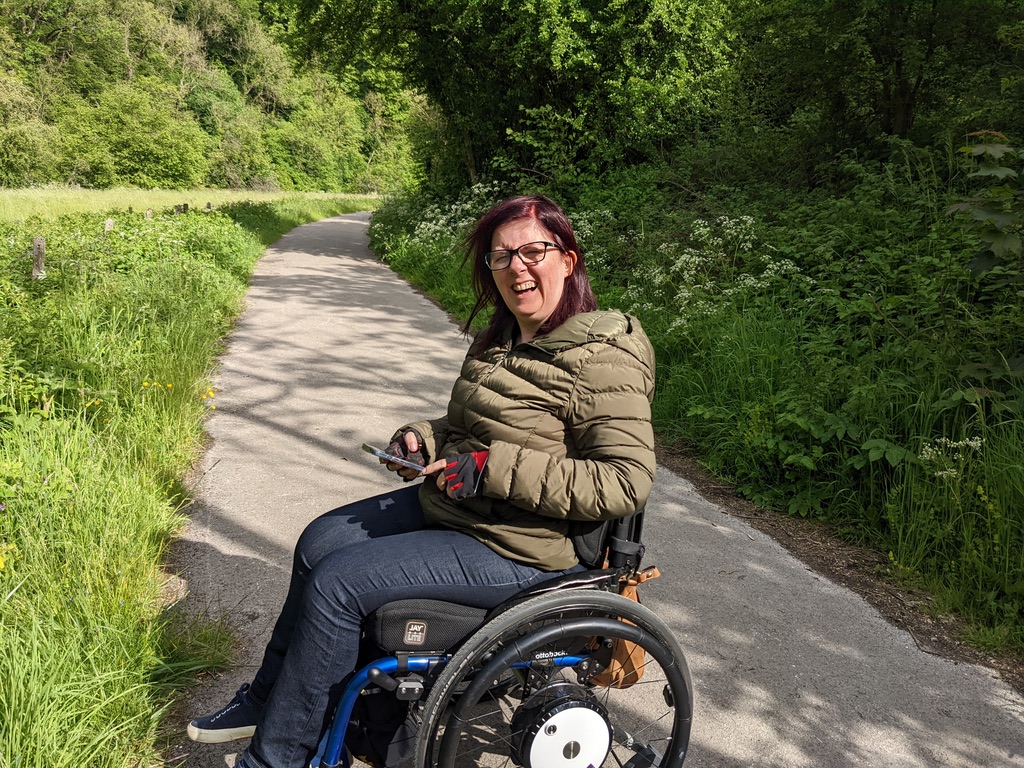I’ve been having a moment of radical recognition with Julia Watts Belser’s writing on animism and wheelchairs, in her book Loving Our Own Bones. In a chapter titled ‘God on Wheels,’ Belser writes:
Over the decades, I’ve built relationships with many different wheelchairs, getting to know their preferences and particulars, coming to understand how they move through the world and what that means for how we move together… Among friends, my wheelchairs have gender and animacy. They are subjects and actors in our lives… To know me is to know how I move through the world, to know my loves, to know the way these kinships flow… When I’m centered in my deepest self, I am part of an intricate web of relations. I’m in touch with the pulse of ruach, the living presence that flows through body, world, and wheels. (p.221)
Yes, yes, yes. I remember Marvin (named for the robot from the Douglas Adams books), a second-hand powerchair who was all I could afford, who rumbled along slowly and reluctantly, but he gave me the gift of freedom after nearly a year in stuck in one room. I remember Luna, a manual chair who was a bit too enthusiastic about speed, and would send me spinning out of control down every hill (and I sometimes secretly loved it, even if I was mostly terrified I was going to fall out). And Susan, the regal walking frame, who was passed on to a friend when my mobility needs changed.
I name them less often now, probably fearing it’s childish. Maybe I should think about that. But they still have personalities, and we still know each other. I have what Belser names as intimacy with my wheelchair and my scooter – in movement, in freedom.

Image: Me, in my current wheelchair – with its awesome power-assisted wheels – stopped on the middle of a country path with tall grass on either side. The wheelchair has blue sides and grey, black and white wheels. I’m wearing a green coat; my hair is windswept. (I don’t remember why I was making that very odd face.)
On the very same day I’m reading this chapter, I have a conversation with people who don’t have lived experience of the joy and frustration of mobility devices. (As Belser also writes, “When I speak of my wheelchair to outsiders, I am always biting my tongue.”) These friends don’t understand why I’m *ooh*ing at their description of someone’s agile mobility scooter. I think they imagine I’m doing something like staring. Staring is a very different experience, one that Belser writes about elsewhere in the book. But in this conversation, I think, No. This is recognition.
It’s hard to describe these moments of recognition to people who don’t live them. Moments like when I pass another wheelchair user, usually when I’m chuntering down the hill on my Travelscoot, and the other disabled person stops and says, “Wow. Does it fold up?” And I say, “Yes! They fold up small enough to fit in a kit bag! I can take them on the plane. And they can make it up any hill. They’re so determined. I really like your powerchair.” And they say, “Thanks. She’s a beast! No kerb can stop her!” And we spin away in opposite directions.
Joy on wheels. Crip joy. A shared animist spiritual experience, in communion with the mobility aids we love (and sometimes hate). Both of us – and our wheelchairs – a vital part of divine creation. In a world that values walking above wheeling, that’s a radical experience. Thanks to Julia Watts Belter for naming it.
(And this is before I even start talking about Belser’s image of God on Wheels…!)
I’ve been reading this wonderful book for a book group with my disabled Christian community. Sharing its insights from lived theology with them has been a powerful experience. I highly recommend the (very readable) book, which you can buy here if you’re in the UK. I’m hoping to write a proper review of the book here soon.
Recent Comments